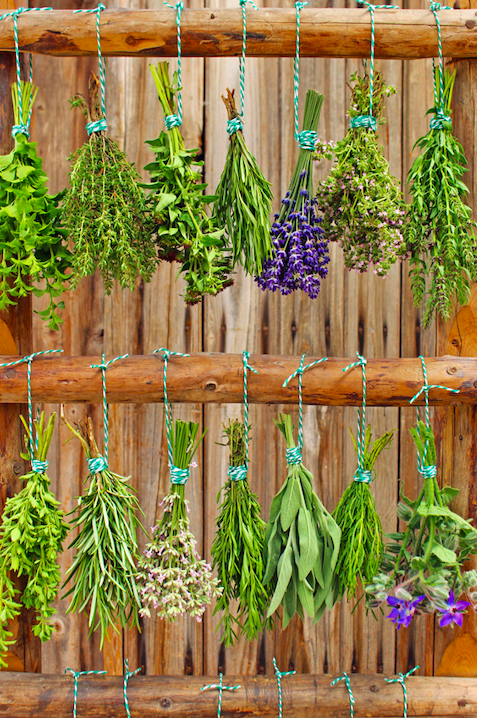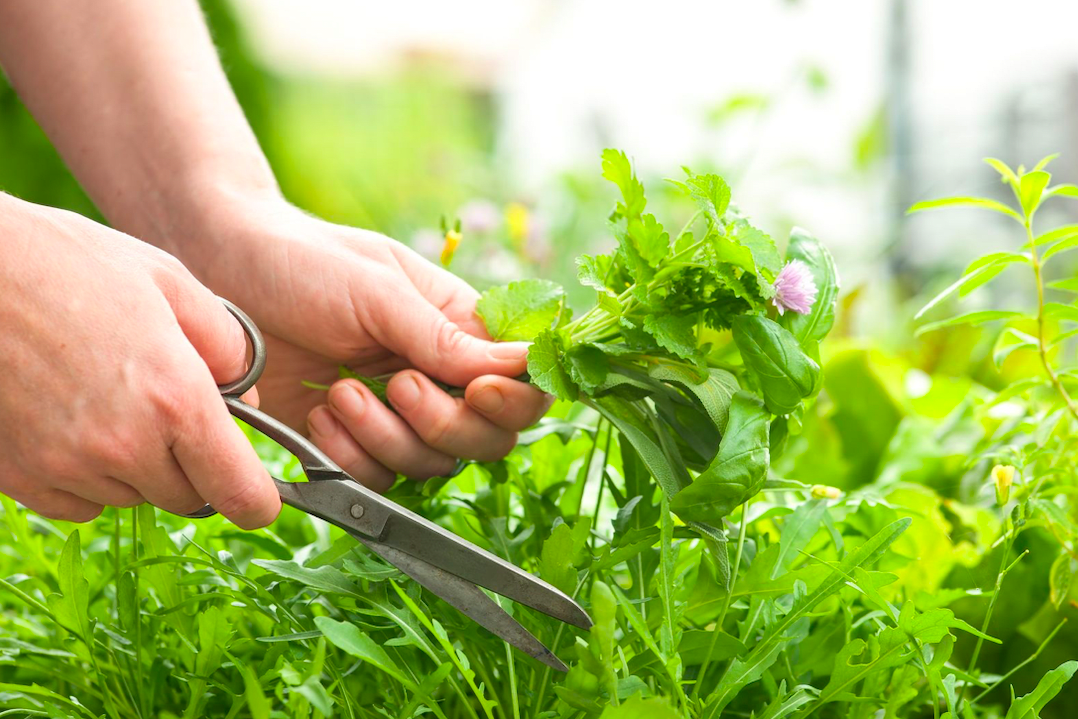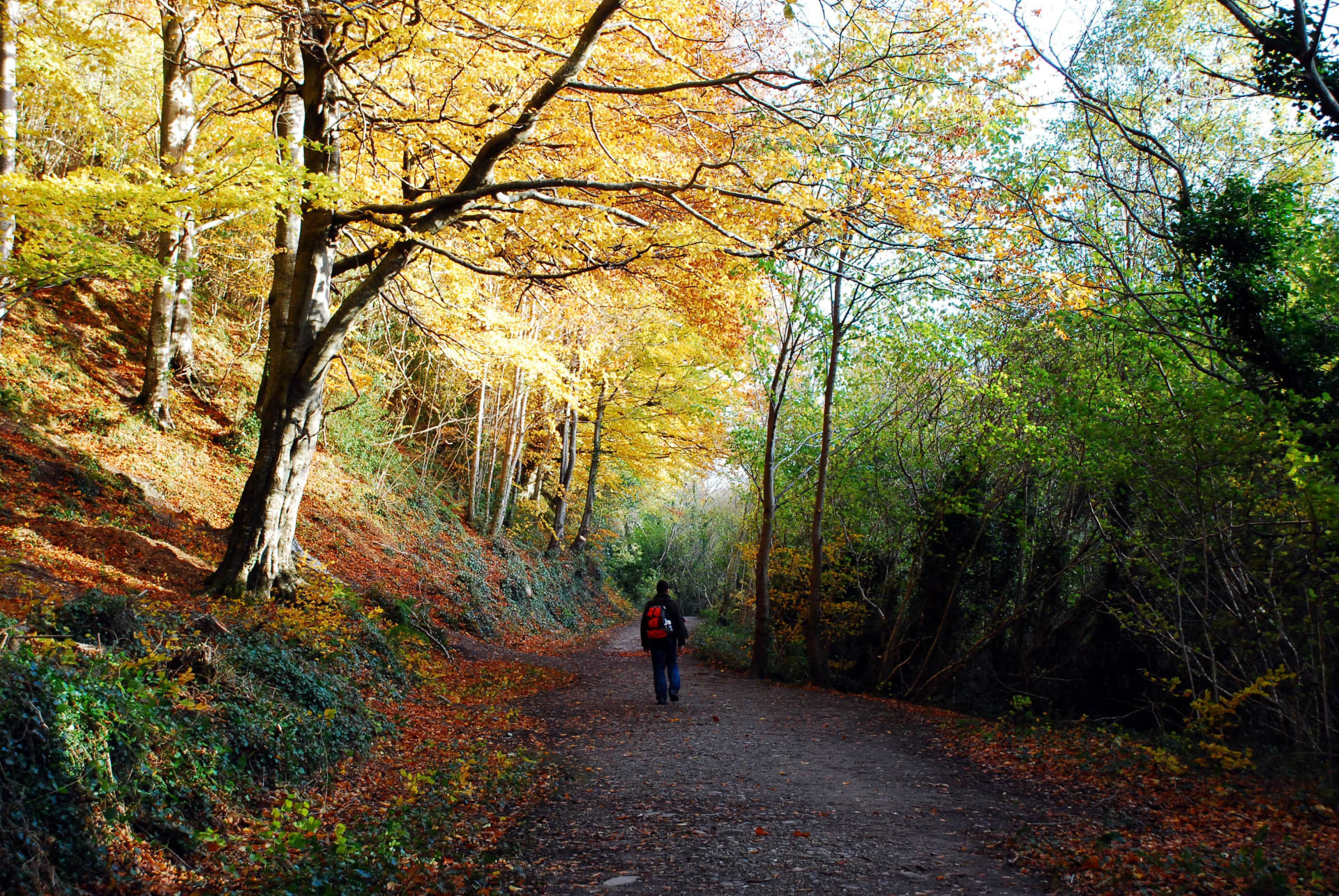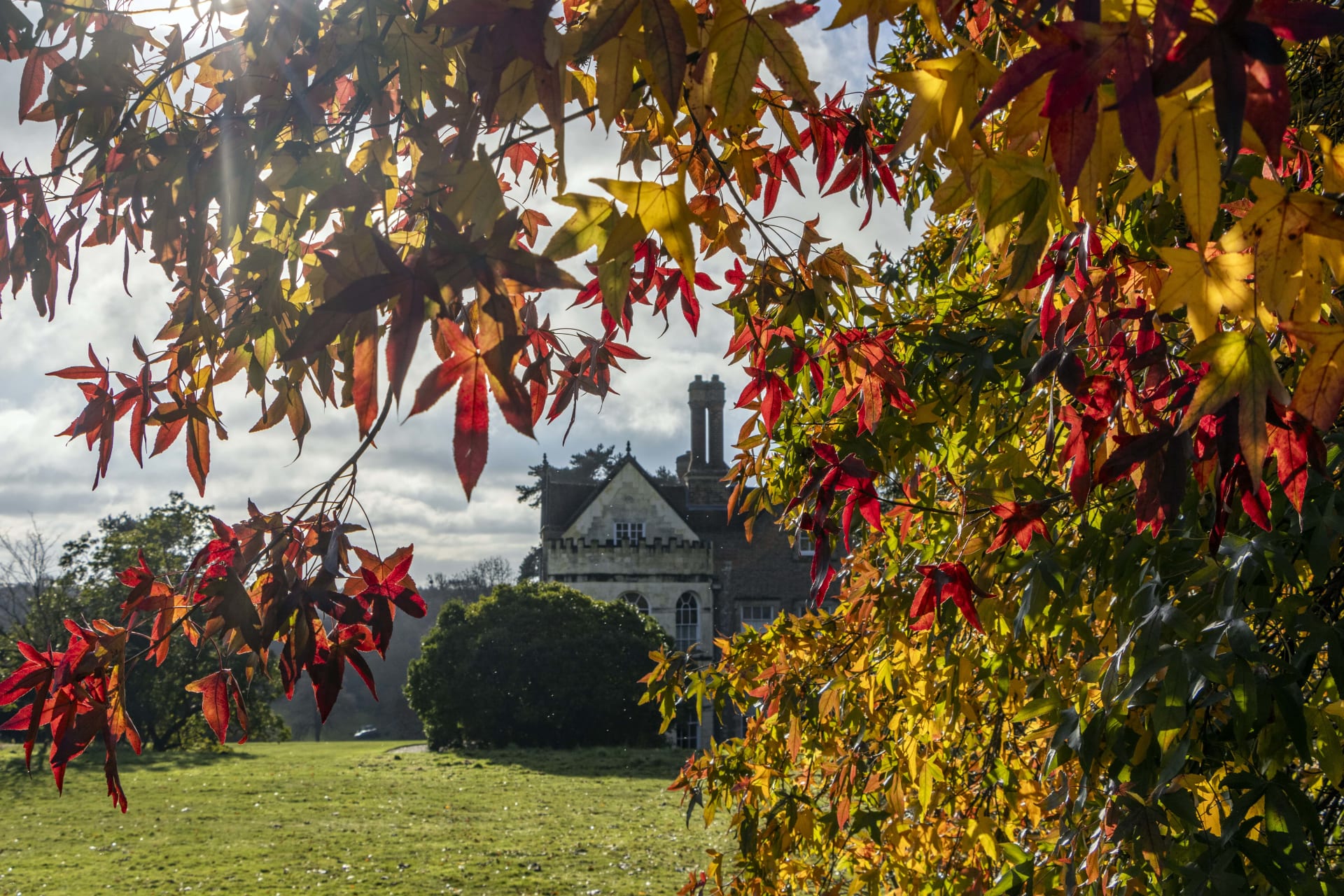As we look towards creating eco-friendly, sustainable gardens which are wildlife friendly, herbs are perfect for creating natural style planting in our gardens or for filling pots on a sunny patio.
Like most plant species, herbs belong to various plant groups. The Apiaceae family which also includes celery and carrots, provide aromatic and flavourful herbs such as fennel, lovage, chervil and parsley. The Brassicaceae family – as the name suggests – not only includes cabbage and other vegetables but also mustard and horseradish. The Lamiaceae group provides a wide range of herbs used in cooking, including mints, origanum, hyssop, thyme and lavenders, although mints are the only moisture lovers. The Myrtaceae group are trees and shrubs widely found in the tropics, subtropics and Mediterranean, and include cloves and allspice rather than green leafed herbs.
The important considerations when growing herbs in your garden are the soil and the aspect within your garden. When devising schemes, herbs can be successfully grouped with herbaceous perennials or shrubs, provided the plants all share the need for a particular type of habitat. As many of the herbs we grow in the UK originate from areas of the Mediterranean, most will require drier conditions with free draining soil and warm sunshine during their growing season. Some herbs are even drought resistant whilst others, like mint, need to be kept moist.
 All herbs (other than mint) require good drainage, and many need additional grit added to the soil. If you have heavy clay soil, grow herbs in raised beds or containers as they will find the wet cold soil of winter unsuitable. If you have loam or sandy loam, the soil conditions are ideal. Sandy soils will lose nutrients very quickly and will require the addition of leaf mould and well-rotted manure in winter. Herbs prefer a soil with a pH range of 6.5 to 7.5, ie neutral soil. Soil less than 6.5 pH is acidic and whilst some herbs will tolerate mildly acidic conditions, adding some lime when preparing the planting area will neutralise the soil. Soils in excess of 7.5 pH are alkaline, resulting in stunted plants and yellow leaves. The addition of well-rotted organic compost, pine needles, even coffee grounds will help reduce alkalinity.
All herbs (other than mint) require good drainage, and many need additional grit added to the soil. If you have heavy clay soil, grow herbs in raised beds or containers as they will find the wet cold soil of winter unsuitable. If you have loam or sandy loam, the soil conditions are ideal. Sandy soils will lose nutrients very quickly and will require the addition of leaf mould and well-rotted manure in winter. Herbs prefer a soil with a pH range of 6.5 to 7.5, ie neutral soil. Soil less than 6.5 pH is acidic and whilst some herbs will tolerate mildly acidic conditions, adding some lime when preparing the planting area will neutralise the soil. Soils in excess of 7.5 pH are alkaline, resulting in stunted plants and yellow leaves. The addition of well-rotted organic compost, pine needles, even coffee grounds will help reduce alkalinity.
When planning your herb garden, study the size of the area you have available. Select your herbs not only for their culinary use but also for their height and spread, whether they are perennial, biennials or annuals. Try to select a range with interesting leaf shapes, colours and textures to add interest to your garden. Some herbs such as sage (Salvia officinalis) have dull, soft leaves which absorb light whereas the glossy evergreen leaves of a bay (Laurus nobilis) reflect light. Herbs can be selected according to colours for an interesting border planting scheme. Choose those with golden and bronze leaves to compliment darker leaves, interspersing with blue flowering lavenders. Further, their blooms can add a range of colours to your planting scheme; from soft blue and purple flowers to the bright yellows and golds of sunflowers (Helianthus) and orange marigolds (Tagetes). Most herbs have small flowers, which create impact if planted in groups or drifts to give maximum visual effect and also attract bees to your garden.
It is not only the flowers which bees are attracted to but also the scent which herbs provide. Bees are particularly attracted to plants with open flowers from which they can easily collect pollen; catmint, hyssop, winter savoury, rosemary, sage and thyme. Bees also prefer areas that are sheltered and sunny, preferably not on the lee side of a wall where there can be down drafts.
Herbs can be grown in specific areas within a garden. How about a low growing thyme carpet with various types of thyme intermingling, enclosed by a clipped box or Ilex crenata hedge? Alternatively, try dotting herbs through a rock garden, which usually provides the perfect run off drainage. If you are looking to create a low allergen garden, there are many herbs which fall within this criterion, such as bay, sage, thyme, oregano and lemon balm (best planted in a pot as, like mint, its roots take over).
Of course, herbs grow well in pots and for the more tender varieties this is the perfect way of ensuring they can be moved into a greenhouse or cold frame over winter months. Something like a strawberry pot can be planted with herbs but you will need to treat them as annuals rather than perennials. Select chives, thymes, sweet marjoram and parsley ‘Champion Moss Curled’ to plant in the top of the pot for a useful mini-kitchen herb garden.
Whichever herbs you choose, it is important to water and feed them. Early morning is best, before the heat of the day. And, every couple of weeks, apply a general-purpose liquid fertiliser to keep them leafy. The occasional dose of liquid seaweed will improve their flavour and a high potash tomato feed mid-summer helps toughen up Mediterranean herbs enabling them to withstand hot, dry spells.









